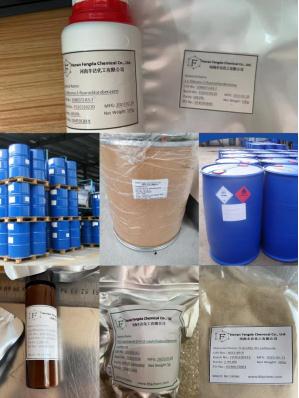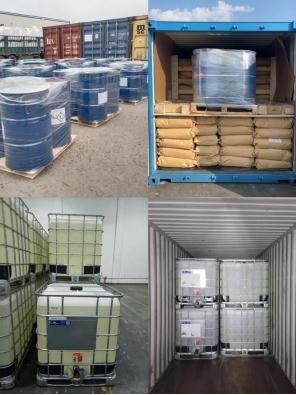![3-(4-Phenoxy-phenyl)-1-piperidin-3-yl-1H-pyrazolo[3,4-d]pyriMidin-4-ylaMine](/ProductImageEN/2024-04/Large/afd73bf1-3c39-4ab3-a22d-cf40b5ff660b.gif)
3-(4-Phenoxy-phenyl)-1-piperidin-3-yl-1H-pyrazolo[3,4-d]pyriMidin-4-ylaMine NEW
| Price | $10 | $5 | $3 |
| Package | 1kg | 25kg | 180kg |
| Min. Order: | 1kg |
| Supply Ability: | g-kg-tons, free sample is available |
| Update Time: | 2024-04-29 |
Product Details
| Product Name: 3-(4-Phenoxy-phenyl)-1-piperidin-3-yl-1H-pyrazolo[3,4-d]pyriMidin-4-ylaMine | CAS No.: 1022150-12-4 |
| Min. Order: 1kg | Purity: 99% |
| Supply Ability: g-kg-tons, free sample is available | Release date: 2024/04/29 |
| Lead time: In stock | Origin: Manufacturer |
| Packaging: bottle/drum/bucket/IBC, as request. | Delivery: By sea, by air, by express |
| Name: Sun |
1. Product information
| Name | 3-(4-phenoxyphenyl)-1-(3-piperidyl)pyrazolo[3,4-d]pyrimidin-4-ami ne |
|---|---|
| Synonym | More Synonyms |
| Description | Btk inhibitor 1 R enantiomer is a pyrazolo[3,4-d]pyrimidine derivative as a Btk kinase inhibitor.IC50 value:Target: BtkFrom PCT Int. Appl. (2012), WO 2012158843 A2 20121122. |
|---|---|
| Related Catalog | Signaling Pathways >> Protein Tyrosine Kinase/RTK >> Btk Research Areas >> Cancer |
| References | [1]. PCT Int. Appl. (2012), WO 2012158843 A2 20121122. |
| Density | 1.4±0.1 g/cm3 |
|---|---|
| Boiling Point | 626.3±55.0 °C at 760 mmHg |
| Molecular Formula | C22H22N6O |
| Molecular Weight | 386.450 |
| Flash Point | 332.6±31.5 °C |
| Exact Mass | 386.185516 |
| PSA | 90.88000 |
| LogP | 3.25 |
| Vapour Pressure | 0.0±1.8 mmHg at 25°C |
| Index of Refraction | 1.731 |
| Storage condition | 2-8°C |
| Hazard Codes | Xi |
|---|
| (R)-3-(4-phenoxyphenyl)-1-(piperidine-3-yl)-1H-pyrazolo[3,4-d]pyrimidin-4-amine |
| Benzenepropanoic acid,4-fluoro-b-methyl-,(bR) |
| (R)-3-(4-FLUOROPHENYL)BUTANOIC ACID |
| (R)-3-(4-phenoxyphenyl)-1-(piperidin-3-yl)-1H-pyrazolo[3,4-d]pyrimidin-4-amine |
| 1H-Pyrazolo[3,4-d]pyrimidin-4-amine, 3-(4-phenoxyphenyl)-1-[(3R)-3-piperidinyl]- |
| 3-(4-Phenoxyphenyl)-1-[(3R)-3-piperidinyl]-1H-pyrazolo[3,4-d]pyrimidin-4-amine |
| 3-(4-Phenoxy-phenyl)-1-piperidin-3-yl-1H-pyrazolo[3,4-d]pyriMidin-4-ylaMine |
| Btk inhibitor 1 R enantiomer |
| 3-(4-phenoxyphenyl)-1-(piperidin-3-yl)-1H-pyrazolo[3,4-d]pyrimidin-4-amine |
| (R)-3-(p-fluorophenyl)butanoic acid |
| (r)-3-(4-phenoxyphenyl)-1-(piperidin-3-yl)-1h-pyrazolo(3,4-d)pyrimidin-4-amine |
| Btk inhibitor 1 (R enantiomer) |
2. Packaging
For powders: normal is 25kgs/Drum or bag, or larger/smaller package as request.
For liquids: normal 25kgs/drum, 180-300kgs/bucket, or IBC, determined by the nature of the product.
Or smaller package 1kg/bottle, 10kgs/bottle as request.


3. Shipping

4. Contact information
For more details, pls contact us freely.
Email address : sun@fdachem.com
Mob: 86 13526505137
WhatsApp/Skype/Wechat/: 86 13526505137
Company Profile Introduction
Henan Fengda Chemical Co., Ltd. is located in the High-tech Development Zone of Henan Province. Specializing in the production and sales of various fine chemical products required for industrial production, including chemical raw materials, organic raw materials, petrochemicals, chemical reagents, solvents, catalysts, and additives, etc.
You may like
Recommended supplier
| Product name | Price | Suppliers | Update time | |
|---|---|---|---|---|
| $42.00/100mg |
VIP5Y
|
TargetMol Chemicals Inc.
|
2024-11-19 | |
| $42.00/100mg |
VIP3Y
|
TargetMol Chemicals Inc.
|
2024-11-19 | |
| $0.00/25KG |
VIP1Y
|
Shaanxi Dideu New Materials Co. Ltd
|
2024-11-13 | |
| $0.00/1kg |
Nanjing Fred Technology Co., Ltd
|
2023-12-28 | ||
| $20.00/1kg |
VIP5Y
|
Hebei Yanxi Chemical Co., Ltd.
|
2023-03-13 | |
| $48.00/1KG |
Guangzhou Sunton Biotechnology Co., Ltd.
|
2021-03-30 | ||
| $105.00/25KG |
Chemwill Asia Co.,Ltd.
|
2019-07-24 | ||
| $100.00/1KG |
VIP7Y
|
Career Henan Chemical Co
|
2018-07-24 | |
| $0.00/0KG |
Shanghai Yingrui Biopharma Co., Ltd.
|
2018-03-06 | ||
| $166.50/25KG |
Chemwill Asia Co.,Ltd.
|
2019-07-24 |
- Since: 2023-02-10
- Address: Room 01, 2288 E05, Building 14, East Henan University, Science and Technology Park, 279 Xisanhuan Ro
INQUIRY


![3-(4-Phenoxy-phenyl)-1-piperidin-3-yl-1H-pyrazolo[3,4-d]pyriMidin-4-ylaMine](/ProductImageEN/2024-04/Small/afd73bf1-3c39-4ab3-a22d-cf40b5ff660b.gif)
![3-(4-Phenoxy-phenyl)-1-piperidin-3-yl-1H-pyrazolo[3,4-d]pyriMidin-4-ylaMine](/ProductImageEN/2024-04/Small/a33bb17e-3e24-4a6f-9e28-473db28f3c03.png)
![3-Iodo-1H-pyrazolo[3,4-d]pyrimidin-4-amine](https://img.chemicalbook.com/ProductImageEN/2024-04/Large/b80aa481-dee9-4edb-af23-bf0df28d86ed.gif)
![3-(4-Phenoxyphenyl)-1h-pyrazolo[3,4-d]pyrimidin-4-amine](https://img.chemicalbook.com/ProductImageEN/2024-04/Large/d6da9f32-4f99-4fa0-b238-87c5d26bff9b.gif)
![1-Piperidinecarboxylic acid, 3-[4-aMino-3-(4-phenoxyphenyl)-1H-pyrazolo[3,4-d]pyriMidin-1-yl]-, 1,1-diMethylethyl ester, (3R)-](https://img.chemicalbook.com/ProductImageEN/2024-04/Large/e86abdd7-e13f-4e42-8dbe-11bf17282c76.png)

 China
China